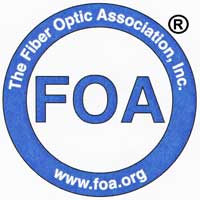

November 2021
|
Search the FOA website
FOA Home Page
Contact
Us
|
Sign
up for the FOA eMail Newsletter
Privacy Policy
Sections
News
Technical
Worth
Reading Q&A
Training/FiberU
Resoures
Safety
About
|
- Note we have
changed the format to place articles in
sections on one topic and all articles are
dated so you know if we repeat one - which
we often do when we think it's very
important!
Warning For Techs About Fiber Amplifiers
Build Your Own PON Demo
Fiber Installation In Rural Nepal
New FOA Training & Certification Guidelines
Fiber U Basics Course Now In Spanish
Building Rural Broadband
Fiber U FTTH Program
CFOT Renewal Requirements
Newsletter Sections
Click
on any link to jump to that section
News
Billions For Broadband (Maybe)
Move To Bemidji For Gigabit Broadband
New Fiber Magazine in Spanish
Technical
Warning For Techs About Fiber Amplifiers
New Connector Formats, Polarity
Loss Budget Calculator
Worth
Reading Lots of interesting
articles
Q&A
Questions from our readers
Training/FiberU
New FOA-Approved Schools, Fiber U
MiniCourses, making training classroom safe, onine
training, materials, more
Resources
New FOA YouTube Videos. Safety
About
FOA Certifications:
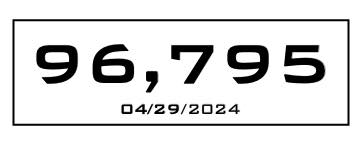
Time
To Renew Your FOA Certifications?
Special offer - 1/3
Off Renewal
Jobs
- See FOA Jobs
Web Page and FOA on

- The FOA Jobs
Web Page has been updated and a new page added
on Using your FOA
Training/Certification to Find the Right Job
in Fiber Optics
Where
Are The Jobs In Fiber Optics? FOA talks about
all the applications for fiber optics, what jobs
involve and the qualifications for the workers in
the field in this YouTube video.
Join The FOA eMail Newsletter
List
Want
to be notified when the FOA Newsletter is updated? Sign
up for the FOA eMail Newsletter. You can
also sign up from your cell phone: text "FOA" to
22828 (usual text message charges apply)
Trademarks:
The FOA CFOT® (Certified Fiber Optic Technician) and
Fiber U® (the FOA online self-study program) are
registered trademarks of the FOA.

Want to know more about fiber optics? Study
for FOA certifications? Free
Self-Study Programs are on "Fiber U®."
Looking for specific information? Here's the largest
technical reference on the web: The
FOA Online Fiber Optic Reference Guide.
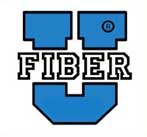
Free online self-study programs
on many fiber optics and cabling topics are
available at Fiber U,
FOA's online web-based training website.
FOA
Reference Books
Available Printed or eBooks
The fiber book is
available in Spanish and French
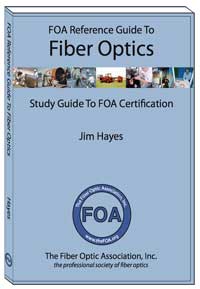 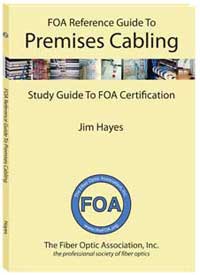 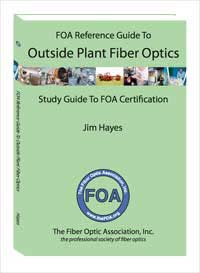
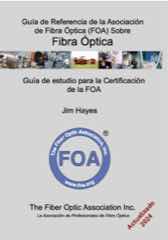
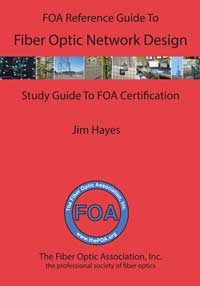 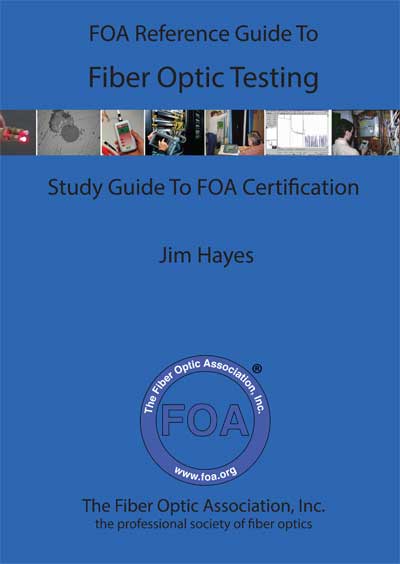
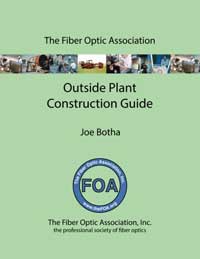 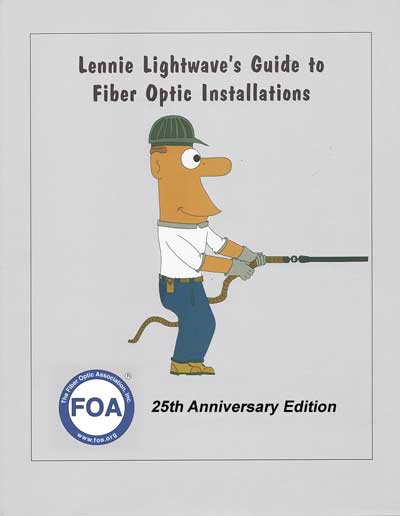
Lennie
and Uncle Ted's
Guides are now also available as free iBooks on
iTunes.
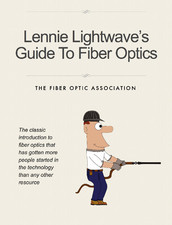
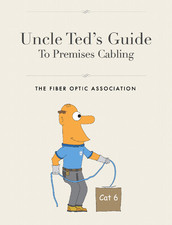
Click on any of
the books to learn more.
- Fiber
Optic Safety Poster to download and
print
FOA Videos on 
FOA
is a member of:




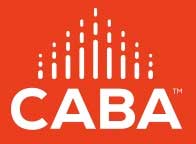
The FOA Newsletter is
edited by Jim Hayes - send your stories, leads,
ideas, comments to <jim @ foa.org>

Search the FOA Website With
DuckDuckGo
- The Archives: Past
Issues.
- Use these links to
read past issues or use FOA's
Custom Search to look for specific
topics on our website.
1/21, 2/21. 3/21, 4/21, 5/21, 6/21, 7/21, 8/21, 9/21, 10/21,
11/21,
1/20,
2/20,
3/20.
4/20,
5/20,
6/20,
7/20,
8/20,
9/20,
10/20,
11/20,
12/20,
1/19,
2/19,
3/19,
4/19, 5/19, 6/19, 7/19, 8/19, 9/19,
10/19,
11/19,
12/19
1/18,
2/18,
3/18, 4/18,
5/18, 6/18, 7/18, 8/18, 9/18, 10/18,
12/18.
1/17, 2/17, 3/17, 4/17, 5/17, 6/17,
7/17,
8/17,
9/17,
10/17, 11/17,
12/17
1/16, 2/16, 3/16,
4/16,
5/16,
6/16,
7-8/16,
9/16,
10/16,
11/16,
12/16
1/15,
2/15,
3/15,
4/15,
5/15,
6/15,
7/15,
8/15,
9/15 ,
10/15,
11/15
, 12/15
1/14,
2/14,
3/14,
4/14,
5/14,
6/14,
7/14,
8/14,
9/14,
10/14,
11/14,
12/14
1/13,
2/13,
3/13,
4/13,
5/13, 6/13,
7/13,
8/13,
9/13,
10/13,
11/13,
12/13
1/12
, 2/12,
3/12,
4/12,
6/12,
7/12,
8/12,
9/12,
10/12,
11/12,
12/12
1/11 ,
2/11,
3/11,
4/11,
6/11,
7/11,
8/11,
9/11, 10/11,
11/11,
12/11,
1/10 ,
2/10,
3/10,
4/10,
05/10,
07/10,
08/10,
09/10,
10/10,
11/10
1/09 ,
2/09,
3/09,
04/09,
05/09,
07/09,
08/09,
09/09,
10/09, 11/09,
12/09
1/08 , 2/08, 3/08, 4/08, 5/08, 6/08, 7/08, 8/08, 09/08, 10/08, 11/08, 12/08
12/07 , 11/07, 10/07, 09/07, 08/07, 07/07, 06/07, 05/07, 04/07, 03/07, 2/07, 1/07
12/06 , 11/06, 10/06, 09/06, 8/06, 7/06, 6/06, 5/06, 4/06, 3/06, 2/06, 1/06,
12/05 ,11/05, 10/05, 09/05, 08/05, 07/05, 6/05, 5/05, 4/05, 2/05, 01/05,
12/04 , 10/04, 9/04, 8/04, 7/04, 6/04, 5/04, 4/04, 3/04, 1/04,
12/03 , 11/03 10/03 9/03, 8/03, 7/03, 6/03, 3/03, 10/02 , 8/02, 5/02
Current Issue of FOA
Newsletter
Time To Renew Your
FOA Certifications?
To
keep your FOA certifications active, you need to
renew them when they expire. Now we have a new more
convenient way to renew - an online store at Paypal
- where you can quickly and conveniently use your
PayPal account or your credit card to renew your
certifications.
- You can now renew
with PayPal or a credit card
-
PayPal is available worldwide
Join FOA On
Social Media

FOA
has four LinkedIn Groups
FOA
- official page on LinkedIn
FOA
- covers FOA, technology and jobs in the fiber optic
marketplace
FOA
Fiber Optic Training - open to all, covers
fiber optic technology and training topics
Grupo
de La Asociación de Fibra Óptica FOA (Español)
|
FOA Newsletter -
Features
Warning For Fiber Techs Doing OSP Restoration
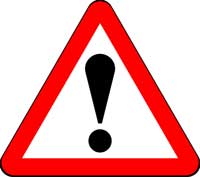
FOA recently received an inquiry that was a new one; whether techs
working on restoring OSP links should be concerned about eye safety if
the link used fiber amplifiers. To answer this question, we had to do some research on fiber amplifiers.
The short answer is YES, you should be concerned. The long answer is
more technical and includes details that every OSP tech needs to know.
See "Fiber Amps And Restoration" in the technical section below.
Build Your Own FTTH Or OLAN PON Demo
FOA has created a Fiber U DIY
(do-it-yourself) hands-on exercise to demonstrate the principle of a PON
(passive optical network) used in FTTH and optical LANs. It is
available as a Fiber U DIY course and a FOA YouTube video.
The exercise begins with bi-directional networks over a single fiber
using WDM (wavelength division multiplexing), then adds splitters in the
link to show how PONs work. Directions are given for testing power in
the bi-directional link and measuring the loss of the added splitters in
the PON network.
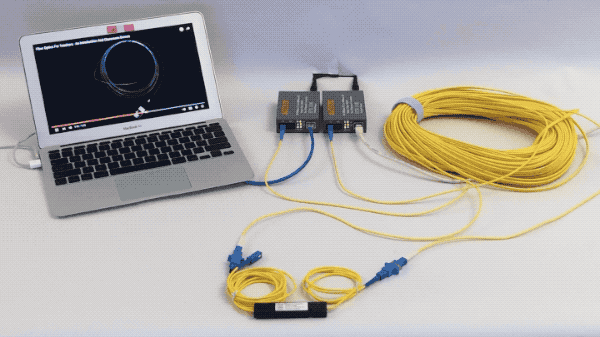
We purchased all the
components are available online at low cost, making this a reasonable
project for almost anybody. It's especially good for schools for their
labs and contractors involved in OJT with employees.
Go to Fiber U DIY PON Demo course and a FOA YouTube PON Demo video that describes it.
Fiber to the Kalitar Village in Ilam District of Nepal
FOA first heard about this installation when photos were posted on our LinkedIn group by Tek Bahadur Limbu, CEO, Konnect
Nepal Networks Pvt Ltd. We were amazed by the ingenuity of the project
and asked Tek to tell us more about this installation for FOA readers.
This is his story as he tells it:
Nepal is uniquely landlocked between India in the south and China in the
North. With a total area of 147,515 km2 and a GDP capita of just $1300,
Nepal is a relatively poor country. Nepal has one of the harshest terrains in the world which makes getting fiber optical connectivity a big challenge.
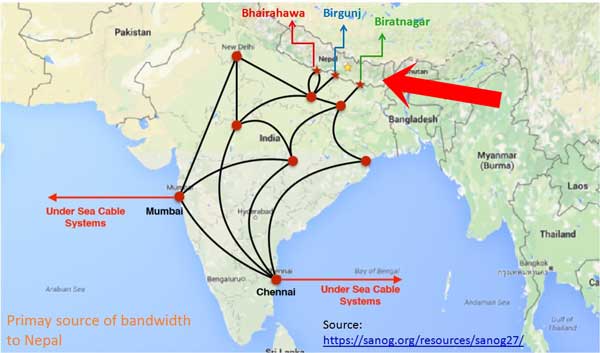
Nepal gets connected to the Internet via overhead fiber optic cables
from India. The current international bandwidth capacity of Nepal is
estimated to be 750 gbps.
Konnect Nepal Networks is one of the leading private internet service
providers (ISP) in Nepal with particular focus on the rural sectors
where fixed line connections are difficult to reach and now has
presences in 40 districts out of 77 in Nepal. Konnect Nepal delivers broadband to consumer homes throughout Nepal at a
relatively economical price prices ranging from $7 to $40 per month.
The speeds range from 10 mbps up to 100 mbps.
Acting as an Internet aggregator, we enable local entrepreneurs to start
their own home grown networks in their villages and sub-urban cities
all over the country and we cover as many as 1000 villages out of a
total of 6743 in all directions of the country.
Here, we speak about our journey to connect a remote village named
Kalitar of Rong Rural Municipality. This village is located in the
eastern district called Ilam. Along the Biring river touching
Jhapa and Ilam districts, the only internet connectivity in the village
is limited 2G/3G services which are quite expensive.
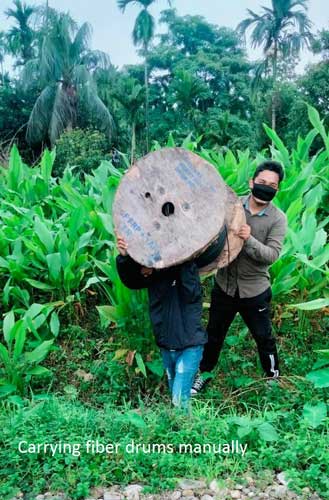 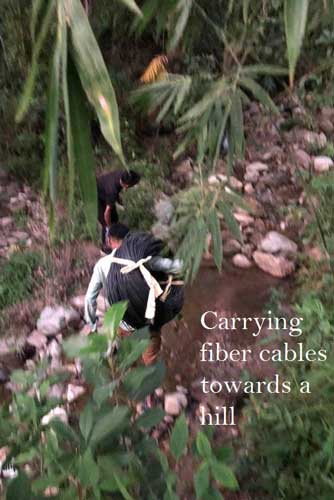 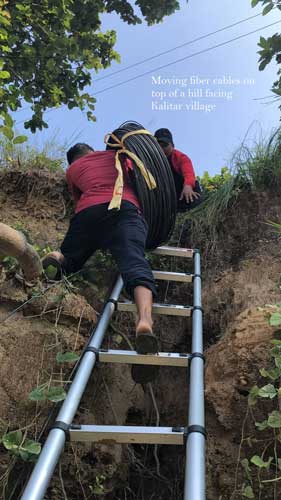 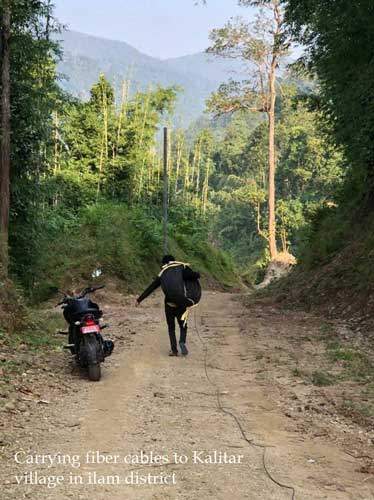
Just delivering cables to some of the remote locations required unique methods
Delivering fiber connectivity proved to be a challenge due to the lack
of utility poles. Hence, we had to rely on a tree acting as a repeater
to get the trunk link to the village. It took an entire week to lay the cables from the control room to reach Kalitar village.
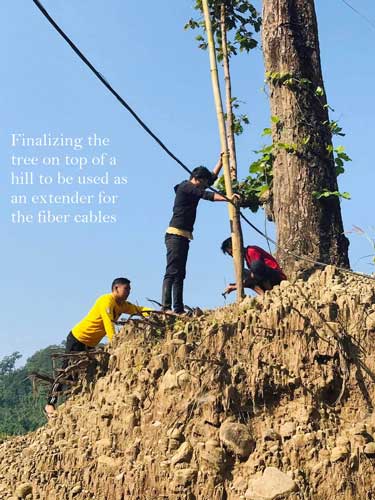 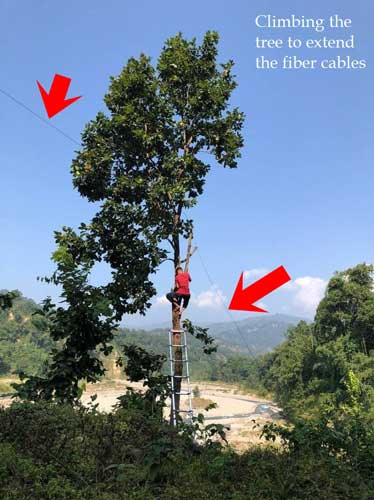
Using trees for aerial cables
 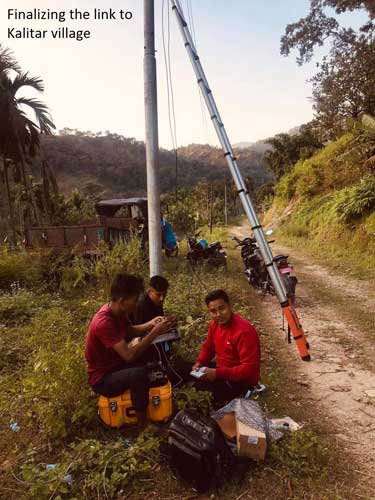
Splicing the cable plant
Once the fiber network reached the village, the villagers experienced
high speed broadband for the first time.
Without worrying about the cost, video lagging or buffering, they can
now use the internet for education, video calls, zoom classes,
entertainment, etc.
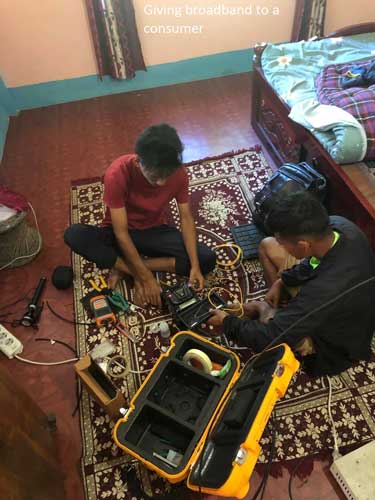 Connecting a customer. Connecting a customer.
FOA thanks Tek Bahadur Limbu, CEO, Konnect Nepal Networks Pvt Ltd. for this great story and photos.
New Guidelines For
Fiber Optic Training And Certification
FOA believes that fiber optic technician training
courses need to reflect the real world, and as
technology and applications change, training must
change also. Classroom and online lessons and hands-on labs should always focus on current
technology to ensure competent techs.
FOA is creating new course guidelines for approved
schools to follow to ensure their training fits
current technician needs. These new guidelines will
be ready for use in 2022.
Read more.
Fiber U "Basic Fiber
Optics" Online Self-Study Course Now In Spanish
El curso de
autoaprendizaje en línea "Fibra óptica básica" de
Fiber U ahora en español
El sitio de
aprendizaje en línea de FOA, Fiber U, tiene más de
dos docenas de cursos de autoaprendizaje gratuitos
sobre fibra óptica y cableado de instalaciones.
Como era de esperar, el tema más popular es el
curso "Fibra óptica básica", que se utiliza para
iniciarse en la fibra óptica y como curso de
preparación para realizar el examen de
certificación FOA CFOT.
Ahora el curso básico
de fibra óptica está disponible en español,
utilizando el libro de texto FOA en español, la
sección de la Guía en línea en español y la
capacidad de YouTube para traducir subtítulos de
video al español. El curso funciona exactamente
como la versión en inglés con 10 lecciones, cada
una con cuestionarios y una opción para tomar un
examen de Certificado de finalización.
Para presentar el nuevo curso de
español Fiber U, el examen Certificate of
Completion es gratuito, así que dígaselo a sus
contactos.
Curso Básico de Fibra Óptica
de Fibra U en español.
How To Build Rural
Broadband, Learning From History
In the August
2021 FOA Newsletter, we published a lengthy
article on rural broadband and compared it to
rural electrification in America in the last
century. Much of the comparison was based on an
article written in 1940 by a USDA economist,
Robert Beall, called "Rural Electrification."
If
you are interested in or involved in rural
broadband, we recommend you read the article "How
To Build Rural Broadband, Learning From History"
in the August 2021
FOA Newsletter and read the Beall article
also.
Offer Extended: Take
the updated Fiber U FTTH course and the
Certificate of Completion Test FREE
until December 31, 2021
FTTH Updates In The
FOA Guide And YouTube
FTTH
has always been the most popular application for
FOA's knowledge base. We've been working overtime to
update FOA materials covering FTTH adding and
updating information important for network owners
and managers, designers, installers and operators to
be familiar with, as they can help build FTTH
networks that are better, cheaper and easier to
design, build and operate.
Read more about the FOA's FTTH
information updates
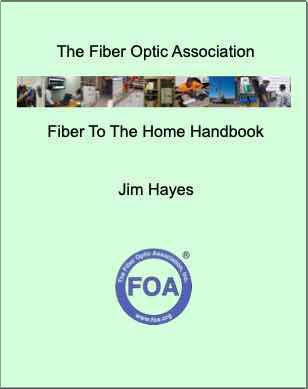
The Fiber Optic Association
Fiber To The Home Handbook is
available from Amazon in print ($19.95) and
Kindle ($9.95) editions.
CFOT Renewal
Requirements
In the future, there may be a requirement for continuing
education to renew your FOA certifications. That can
be almost any fiber optic training you have received
in the prior 3 years, e.g. manufacturer's training on
their products, certification training classes, online classes like the free ones on Fiber U.
FOA is testing a short online course option for
renewals where you take a short Fiber U online
course. If you would like to help FOA test this
option, you can save 1/3 the cost of your
renewal. Go here to take the Fiber U CFOT
Renewal Course
SPECIAL OFFER
- Help Us Test The CFOT Renewal Course and Save 1/3 Off Your
Certification Renewal Cost
FOA Newsletter
Sections
News
Technical
Worth
Reading Q&A
Training/FiberU
Resoures
Safety About
|
News
Lots more news
in Worth Reading below
|
Billions For Broadband In The US (But Don't Hold Your Breath!)
By now everybody knows that the Biden administration in America has
passed a $1 TRILLION (that's so much money that putting it in all caps
seems appropriate) infrastructure bill that includes about $65 billion
for broadband. Trade associations, lobbyists, vendors and incumbents are
all expressing excitement over this bill while many potential
recipients of the funds are simply confused or overwhelmed by the 2,702
pages of details.
That $1trillion bill includes about $500 billion in new projects, beyond current spending. It includes:
- $110 billion for roads and bridges
- $66 billion for railroads
- $65 billion for electrical grids
- $65 billion for broadband
- $63 billion for water infrastructure, including addressing drought problems in the west
- $50+ billion for protection of infrastructure, targeting cybersecurity and climate change
- $39 billion for public transit
- $25 billion for airports
- $21 billion for the environment
- $17 billion for ports
- $15 billion for electric vehicle charging stations and electric school busses
- $11 billion for highway and other safety projects
As you might guess, spending all this money is not as easy as it sounds.
The largest share of the pie, $42+ billion, will be handled by NTIA, The National Telecommunications and Information Administration,
part of the Department of Commerce responsible for advising the
President on telecommunications and information policy issues and
administering grant programs that further the deployment and use of
broadband and other technologies in America. NTIA has about 47,000 employees but has been without a permanent leader
since the new administration took over and the nominee is in limbo
waiting for a confirmation hearing to be scheduled.
NTIA is tasked with
providing the money to the states based on need - e.g. unserved or
under-served areas. In order to determine the need of geographic areas, NTIA is to rely on data from
the FCC (Federal Communications Commission); data which has been
controversial for years because of its reliance on ISPs for coverage and
speed data. The new bill will require gathering more data before money
begins flowing, a process that can last for a year or more.
That will be
a big delay in getting the program started, but does allow time for the
states to get their programs in the pipeline. That is a big task itself
- states must develop the infrastructure to develop and evaluate plans
for using the grants, then distribute the grants and ensure they are
properly implemented. In many states, there are also laws on the books
that conflict with the program, banning municipal networks, which is
specifically prohibited by the bill.
The time needed for creating new broadband maps also provides plenty of
time for lobbyists, consultants and others
looking to get involved to get started. And giving money to the states
can be problematic. Earlier programs like this provided direct grants to
the programs and ran into problems. Adding another layer of political
structure in the states provides even more opportunities for problems in
getting funds
to worthwhile projects. And politics - many states have a history of
fighting any kind of federal programs, even those that offer big money
for projects.
Footnote:
NTIA has $1billion allocated for a new middle-mile program to build
high-speed backbones for communities, businesses, and anchor
institutions. This may need a reality check because $ 1 billion for
these networks won't go far - The state-funded Kentucky Wired program
alone cost more than 1/3 of this allocation!
Move to Bemidji?
The public radio program "Marketplace" had an interesting story on their
show on November 25, 2021 about people moving to areas with a lower
cost of living because they were working at home and could work from
anywhere. The story focused on a couple that moved to Bemidji,
Minnesota, not just for the cost but because the city promoted their
advantages for telecommuters, including fiber optic gigabit broadband,
and a not inconsiderable incentive program to help pay for your move. They have a very good website to attract interested people!
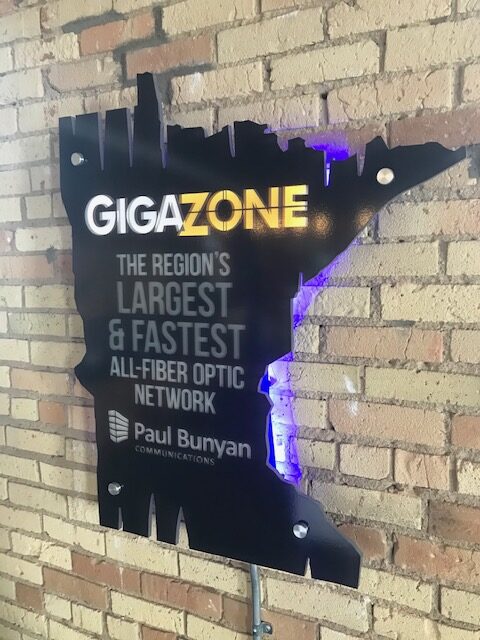
You can listen to the podcast on Apple Podcasts.
|
Technical
On fiber optic
technology, standards, equipment, installation,
etc.
The FOA
Update Page covers all the new technology
and applications we covered in this newsletter
recently. Now you can review all that new tech at
once.

Want to know more about fiber optics? Study
for FOA certifications? Free
Self-Study Programs are on "Fiber
U®." Looking for specific information?
Here's the largest technical reference on the web:
The
FOA Online Fiber Optic Reference Guide.
|
Warning For Techs Doing OSP Restoration

Is it safe for fiber techs to splice OSP networks that use fiber amplifiers as repeaters?
FOA received an inquiry about this recently for which we had no ready
answer, so we did some research on the topic of fiber amplifiers. The
question was whether techs working on restoring OSP links should be
concerned about eye safety if the link used fiber amplifiers.
The answer is not a simple yes/no! The short answer is YES; the long answer is more technical and includes details that every OSP tech needs to know.
First a bit of tech.
Fiber amplifiers have been around for decades, replacing electronic
repeaters that convert a signal from the optical domain back into the
electrical domain, remove some noise and retransmit it as an optical
signal. Fiber amps replaced them because they used too much power and
were unreliable.
Fiber amplifiers
are used in WDM systems where there can be power from a number of
different wavelengths, increasing the total power, or in analog systems
like CATV HFC systems where high power DFB lasers are used.
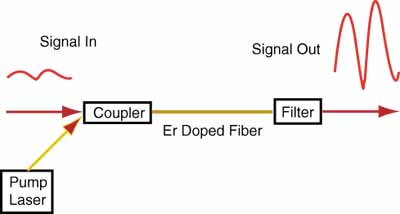
The most common fiber amp (EDFA - erbiun-doped fiber amplifier) uses
some complex physics that allows light entering a special fiber
(generally erbium-doped fiber) to be amplified by the light from a high
power "pump laser" at a different wavelength (980 or 1480 nm). Pump
lasers can be as powerful as 10 watts, +40 dBm! Fiber amplifiers have
gains of around 20 dB, so a "0 dBm" laser (1 mw) input will be amplified
to +20 dBm (100 mw). That is a LOT of optical power.
A second type of fiber amp (RAMAN) uses the transmission fiber to
amplify the signal using high-power pump lasers, sometimes at both ends
of the fiber, at particular wavelengths. These are less common.
The problem that field techs need to worry about is whether a fiber amp
will shut down if the link is broken. Transmission equipment generally
shuts down the transceiver if the receive sees no input and initiates an
alarm. If there are fiber amps in the link, will they shut down if
there is no input? The answer is maybe.
The problem seems to be a lack of standardization in fiber amp design.
Some amps have sensors on the input that shuts down the pump laser when
there is no input. Those should be safe. But most designs, it seems, do
not have that feature. We talked to two manufacturers and two users and
the consensus is that fiber amps will have the output of the pump laser
on the output fiber even with no signal at the input.
One user tested a unit with an input sensor. With a range of inputs from
-12 to -4 dBm, the output was a constant at around +20 dBm. Below, -12
dBm, the output was zero - no light at all - even though the EDFA was
switched on. However, when the EDFA was switched off, the unit was
simply a passive component and would transmit signals at 1490 nm but not
at 1550 nm, probably due to a WDM component in the output.
We talked to a manufacturer who mentioned that some EDFAs are
designed this way and some are just amps. For example, he told me their
products will produce ~20 dB gain, so an input of 1 mw will yield ~100
mw output. But if you remove the input, the amp will amplify the noise
and transmit the pump laser on the output which will be about 30 mw,
with the bulk of the power in the pump laser wavelength. A WDM will
filter out the pump laser, but if a tech looks at a broken fiber with
this fiber amp as an input, he will still be looking at a 30 mw optical
output.

It appears that the fiber tech doing restoration on broken OSP
fibers needs to have assurance that either the network does not have any
fiber amps in the link being repaired or the network has been
completely powered down - including the amps.
Never look into a fiber end or get it near your eye since a broken fiber can emit light at an angle.
Before working on any fiber, test it with a power meter to see if power is present.
And the tech probably should wear special laser safety glasses, but we
have not found any yet that cover the entire wavelength range needed.
The State of Washington has an excellent and comprehensive rule for optical communications systems using lasers: WAC 296-32-22576 You can order a free copy of the Washington Rulebook on Safety Standards for Telecom.
If anyone with experience working with fiber amps has an input, please contact FOA.
Vertical Format Connector Increases Fiber Connection Density
SENKO
has adapted their SN connector format to accommodate a MPO ferrule with
up to 16 fibers. As you can see the MPO ferrule fits in the same space
as the two 1.25mm ferrules (same as used in LCs) of the SN connector.
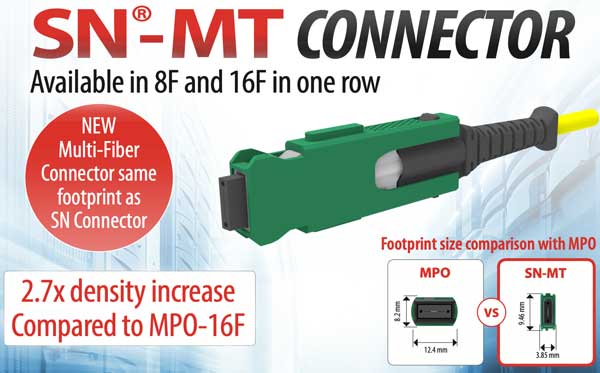
Read more about the SENKO SN-MT connector
US Conec has a similar connector design, their MMC, also adapted from a duplex LC vertical connector design.
Vertical Connector Polarity
At a recent standards meeting,
there was discussion on how to define polarity of the connector
ferrules for the vertical format duplex connectors like the SN and MMC.
The discussion is based on the plug as it connects to a transceiver,
where the A ferrule is connected to the receiver input and the B ferrule
to the transmitter output. The de facto standard, based on transceiver
designs, is that the top ferrule is the transmitter (B) and the bottom
ferrule is the receiver (A). This should be included in future
standards. The discussion on polarity for the vertical MPO ferrule
connectors will probably take more discussion.
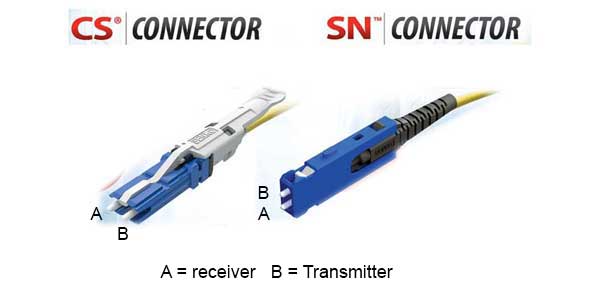
Diagram of proposed polarity for vertical connectors using SENKO connectors as an example.
C'Mon Fiber People,
Let's Get The Details Right
From a training program instructor guide comes this clip with two serious technical errors (underlined):
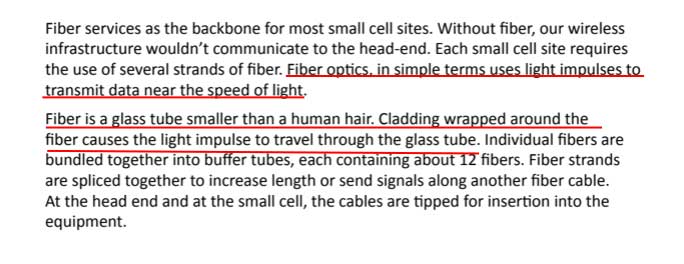
Duh, light can only travel at the speed of light, of
course, but the speed of light depends on the
material the light is traveling in, e.g. glass or
air. And the core of the fiber is not a tube, it's
not hollow!
And you might remember FOA's many articles
about how drawings of optical fiber on the
Internet have left too many techs with the
opinion that you strip the cladding off the fiber
core when you strip fiber, a misconception that
causes 25% to miss the questions about stripping
fiber on the FOA certification exams. Well, some
companies still show fiber like this slide below,
indicating the core and cladding are separate components of the optical
fiber - not one solid piece of glass:
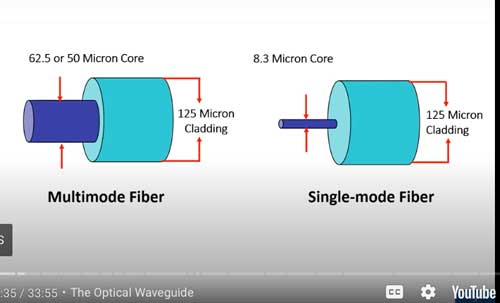
Please, let's all change these diagrams to look like
the FOA drawing below so techs know the core and
cladding are just one solid strand of glass!
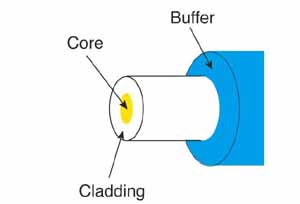
We've been talking about this misinformation for years. Read more about it here.
Try The FOA's Online
Loss Budget Calculator
FOA
has written many articles about loss budgets,
something everyone involved in fiber optics needs to
know and needs to know how to calculate. We've
created a online Loss Budget Calculator that does
the work for you. Just input your cable plant data
and it calculates the loss budget. It works on any
device, especially smartphones and tablets for field
use and even allows printing the results.
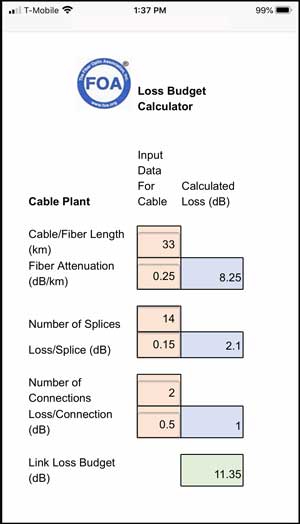
Bookmark
this page (especially on your smartphone): FOA Loss Budget Calculator
Online
|
Worth Reading
Each month we read
hundreds of newsletters and online articles. These
are the ones we think you will find "worth
reading."
|
Worth Reading (And
Watching):
November 2021
Almost half of worldwide hyperscale data center capacity is in the U.S.: Synergy Research (reported in Lightwave)
California Governor Newsom Announces Initial Broadband Projects to Help Bridge Digital Divide Goldenstatenet Update
Conexon Connect gets $435M in latest RDOF round to serve fiber through rural co-ops
- to build and operate fiber networks in 264,717 locations across
Arizona, Florida, Georgia, Illinois, Kentucky, Louisiana, Mississippi
and Missouri.
What’s in the infrastructure bill? - Protocol — The people, power and politics of tech, from Protocol
Satellite hopes meet internet reality - On Tech/NY Times
An Introduction to MoCA for Improved Home Network Performance - Belden/PPC (MoCA is a standard for Ethernet over CATV/Satellite coax used for in-home networks.)
The best practice guide to installing buried microduct - Belden/PPC
He predicted the dark side of the Internet 30 years ago. Why did no one listen?
Washington Post (Philip Agre, a computer scientist turned humanities
professor, was prescient about many of the ways technology would impact
the world)
October
2021
Is
OM5 Fiber a Good Solution for the Data Center?
Six reasons why the answer is NO from Siemon.
Mapping
Broadband Access With Garbage Trucks, and Other
Innovative Municipal Initiatives in Shreveport,
Louisiana - Episode 19 of Connect This! from
Community Broadband Networks
1983
Video of AT&T's First Test Of A Submarine
Cable System From the AT&T Tech
Channel archives (worth exploring!)
Richard
Epworth's Optical Fiber History from his work
at STL from 1966 with Charles Kao.
September 2021
How Much Does A Cable Installer
Earn? Salary.com
Communications Systems Grounding
Rules: Article 800 provides specific
requirements by
Michael
Johnston, NECA Executive Director of
Standards and Safety in EC Magazine
Essential Technologies for
Intelligent Transportation Systems,
Black & Veatch (download PDF)
In 2021, the number of states
preserving legal barriers to municipal broadband
networks dropped from 19 states to 17 states,
ILSR Community Networks
New Fiber Optic
Magazine In Spanish

Todo Fibra Optica is
a new digital magazine in Spanish for fiber optics
in Latin America. Jose Enriquez, editor of Todo
Fibra Optic magazine has many years
experience in the fiber optic industry so he knows
the industry well. FOA will be working with him to
share our extensive technical materials in Spanish.
Latest Issue features FTTH Todo Fibra Optica
Contact:
José Manuel Enriquez Mora, Editor
Todo Fibra Optica LLC
https://todofibraoptica.com/revista-ediciones/
+52 222 302 8224
jose.enriquez@todofibraoptica.com
How
To Build Rural Broadband, Learning From History
In the August 2021
FOA Newsletter, we published a lengthy article on
rural broadband and compared it to rural
electrification in America in the last century.
Much of the comparison was based on an article
written in 1940 by a USDA economist, Robert Beall,
called "Rural Electrification."
If
you are interested in or involved in rural
broadband, we recommend you read the article "How
To Build Rural Broadband, Learning From History"
in the August 2021 FOA Newsletter and
read the Beall article also.
August 2021
US Broadband Coverage By Service
Provider from the FCC
Ciena's Submarine Cable
Handbooks (4 to download)
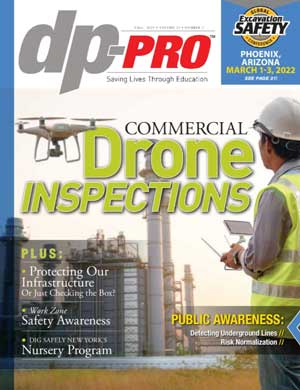
The Fall Issue of
dP-PRO, the "call before you dig" magazine, is
online.
Webinars (On Demand)
Tellabs' RDOF and the
Tellabs FlexSym OLT-mini webcast
plus download the slides
The OLT-mini is a low line count, small form
factor and environmentally hardened OLT designed
to keep deployment costs down, which makes it
ideal for RDOF projects. (Tellabs mimiOLT was
covered in the June FOA Newsletter about rural
FTTH.)
The African Submarine Networking
Seascape: A New and Emerging Market
TeleGeography/Ciena/MainOne
With this lightning-fast
growth rate and eight new cables in the works,
this is an emerging market with big network
infrastructure projects to watch.
New Fiber Optic
Magazine In Spanish

Todo Fibra Optica is
a new digital magazine in Spanish for fiber optics
in Latin America. Jose Enriquez, editor of Todo
Fibra Optic magazine has many years
experience in the fiber optic industry so he knows
the industry well. FOA will be working with him to
share our extensive technical materials in Spanish.
Latest Issue features FTTH Todo Fibra Optica
Contact:
José Manuel Enriquez Mora, Editor
Todo Fibra Optica LLC
https://todofibraoptica.com/revista-ediciones/
+52 222 302 8224
jose.enriquez@todofibraoptica.com
Lightwave Magazine Is
Back!
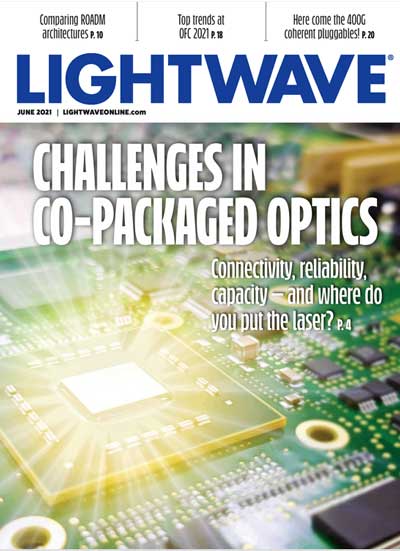
Lightwave Magazine is back
after many years as only a online newsletter.
Lightwave was started in 1984 by Howard Rausch, a veteran
newsman, a gentleman and a scholar! (JH) We reported
on the demise of the printed version of Lightwave in
the FOA
Newsletter of March 2009. Lightwave is back as
a digital magazine, perfect for the times, and still
headed by Editorial Director Stephen Hardy, a
veteran of the fiber optic community with great
in-dept knowledge of the technology, companies and
people who make fiber optics what it is today. Lightwave's comprehensive
website continues too. All very worthwhile reading.
TeleGeography's New
Submarine Cable Map
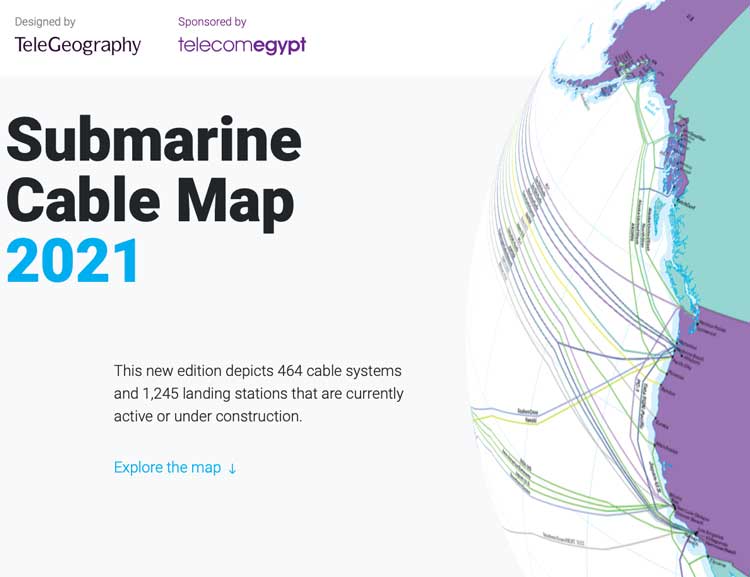
TeleGeography's new 2021
Submarine Cable Map is packed with new
cables and stats. Not to mention the new graphics
and FAQs! This edition is loaded with trivia on
cable suppliers, content providers, deployments,
fiber, and more.
The 2021 Submarine Cable Map depicts 464 cables
and 1,245 landing stations; 428 cables are active
and 36 are planned.
Of the planned cables, 19 were not depicted in our
2020 edition. (The combined length of those 19 new
planned cables is 103,348 km!)
Statistics on US
Labor In Telecom
Eric
Pearson sent us some links to US Bureau of Labor
Statistics data on the US Workforce. Granted it was
updated in May 2019, but has lots of useful and
interesting information on where the work is and
what workers are paid.
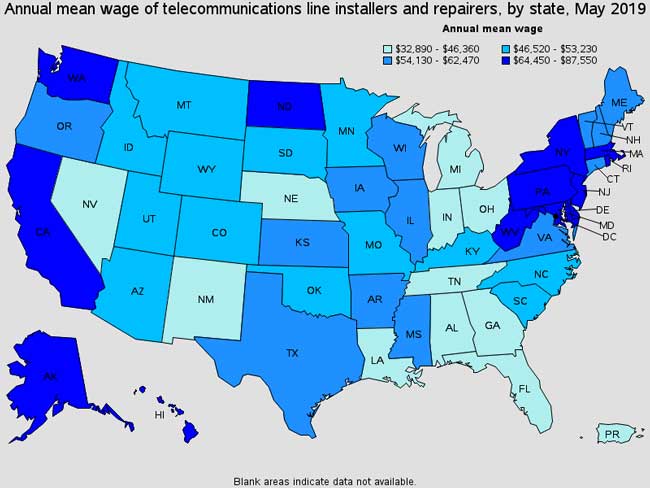
Read
the reports here:
Telecommunications Line Installers
and Repairers (Install and repair
telecommunications cable, including fiber optics.
Telecommunications Equipment
Installers and Repairers (Install,
set up, rearrange, or remove switching,
distribution, routing, and dialing equipment used in
central offices or headends. Service or repair
telephone, cable television, Internet, and other
communications equipment on customers’ property. May
install communications equipment or communications
wiring in buildings.
1995-2020
- FOA's 25th Anniversary!
As
part of celebrating 25 years of serving the fiber
optic industry as its primary source of technical
information and independent certifying body, FOA
thought it appropriate to create a short history of
the organization and how it has developed to
help the fiber optic industry. We also wanted to
recognize the contributions many people have made to
the organization over the years that made FOA what
it is today.
The FOA history is now archived on the FOA
website where you can read it anytime or link to
it. Updated
info - dB, total internal reflection and science
projects,
Worth Reading - News
Summary - Past Links Worth Repeating
Recycling Fiber Optic
Cable - Contact:
Steve Maginnis
LD4Recycle/ CommuniCom Recycling
(Visit
website)
sm@LD4Recycle.com
803.371.5436
Communications Systems
Grounding Rules: NEC Article 800
provides specific requirements -
Electrical Contractor Magazine
Sumitomo's Ribbon
Splicing Guide - download from
one of the leaders in splicing.
"Who Lost Lucent?: The
Decline of America's Telecom Equipment Industry"
This is a MUST READ for managers in telecom or any
industry!
This long and
well-researched and annotated article in American
Affairs Journal should be mandatory reading
for every high level manager in a telecom company -
or any other company for that matter. To summarize
the article, today, America has no major telecom
equipment company and fears the major suppliers of
equipment who are all foreign, especially the Huawei
from China. This article explains how America got
into this deplorable state.
OFS also has an excellent
website and blog of tech articles worth browsing.
IEC 60050 - International
Electrotechnical Vocabulary - An
extensive dictionary for fiber optics in English and
French. Highly technical - this is one definition:
"mode - one solution of Maxwell's equations,
representing an electromagnetic field in a certain
space domain and belonging to a family of
independent solutions defined by specified boundary
conditions"
If you are interested in restoration -
aren't we all? - you should also read this
article in dpPro magazine by FOA President Jim
Hayes: Damage Protection Requies
Looking Overheas As Well As Underground
- dpPRO Magazine - about the problems with
aerial cables. His previous article for the
magazine was New Techniques for Fiber
Optic Installation.
How much fiber optic cable is
manufactured each year? CRU Reports -
unsurprisingly China is by far the largest market
today
The Institute for Local
Self-Reliance weekly newsletter has
lots of interesting articles and links.
The Open Technology Institute at New America just
published “The Cost of Connectivity 2020,”
US Ignite and Altman
Solon issued “Broadband Models for Unserved
and Underserved Communities”
Universal access to broadband
is a cornerstone to a strong economy,
Achieving universal access will require
community partnerships. by Alfreda
B. Norman, Sr. VP, Federal Reserve Bank of
Dallas
FIBER TO THE FARM: The
co-ops that electrified Depression-era farms are
now building rural internet. Be sure to check out
the high-tech equine installation equipment.
Next Century Cities Newsletter
- News from cities around the US
including Detroit and New York plus small
Infrastructure Get Some
Respect, NY TImes "On Tech"
"The magic of the internet requires a lot of
very boring stuff behind the scenes. "
DIRT
Report On Damage To Utilities Common Ground
Alliance (CGA) annual DIRT report provides a
summary and analysis of the events submitted into
CGA’s Damage Information Reporting Tool (DIRT) for
the year 2018. The complete report is available
for download here. In addition,
there is an interactive dashboard that
allows users to filter the data more by
factors contributing to damages.
Structured Cabling News
- a website and weekly newsletter about cabling.
The Internet Master
Plan for New York City.
The New York City Internet Master Plan is a
comprehensive framework for the infrastructure
and services that provide connectivity to New
York City residents and businesses. This
Master Plan will guide City actions and
public-private partnerships to transform New
Yorkers’ access to this essential
infrastructure for generations to come.
Fiber Trivia From
Corning.
The
Future Of Work Is Skills - So Stop Worrying
About Degrees - The
reality is the future of work is about skills, not
just degrees. (FOA Newsletter Feb 2020)
The job market is hot. So why
are half of U.S. grads missing out?
VIAVI Books On
Fiber Optic Testing (2 volumes) - They're back!
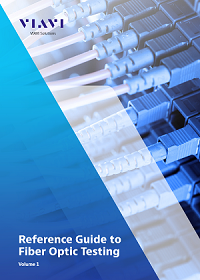 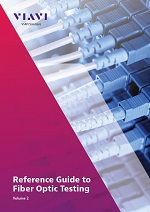
Besides
the FOA reference materials, two JDSU/VIAVI
textbooks, Reference Guide to Fiber Optic Testing,
Volumes 1 and 2, were used as references for
some of the FOA courses and are recommended for
instructors and students. The books are available
from VIAVI as eBooks and the everyone should
download them and recommend them to others.Download
yours now. Volume 1. Volume 2. Viavi Books
Guidebook To MPO
Testing OptoTest
offers this complete guide to MTP®/MPO testing. In
this guide, you will learn all there is to know
about the different test methods, equipment
options, troubleshooting, and best maintenance
practices to ensure that you have the best testing
experience. Go here to download the book.
50th Anniversary of The
Development of Low Loss Fibers A history
of the development of low loss fiber, a fascinating
story by Jeff Hecht on the OSA (Optical Society of
America) website.
How OFS Makes Fiber
Interesting YouTube video on how fiber is made.
Perhaps a little too much "show biz" but
fascinating. If you have ever seen fiber
manufacture, look at this video. You will be amazed
at how big preforms have become!
How Nexans Makes Copper Cables
- compare the process to fiber - don't most of the
machines look similar?
The True Cost of Telco Damages
(what backhoe fade or target practice can
cost)
Rural Electric Cooperatives:
Pole Attachment Policies and Issues, June 2019.
Clearfield-FOA Certification
Training Clearfield is now offering
their customers an FOA
CERTIFICATION course. This course
provides a basic understanding of fiber optic
technology, as well as Clearfield product
knowledge and how Clearfield’s integrated product
systems work together in a fiber network.
Substandard Contractors - Fiber
Optic Knowledge Doesn't Always Trickle
Down (EC Mag)
Another Source Of
Articles On Fiber
FOA
President and editor of this newsletter Jim Hayes
has also been writing a column in Electrical
Contractor Magazine for almost 20 years now.
Electrical contractors do lots of fiber work and
this column has covered some topics they are
interested in including installation processes,
network design, fiber applications and a lengthy
series on dark fiber - what it is, how's its used
and how it benefits the growth of communication. A
recent web site redesign makes it easier to browse
all these articles - just go to http://www.ecmag.com/contributing-authors/jim-hayes
and you can see all of them. |
Q&A
Tech
Questions/Comments From FOA Newsletter Readers
Worth Repeating
The FOA
Fiber FAQs Page (FAQs = frequently asked
questions) gathers up questions readers have
asked us (which first ran in this newsletter)
and adds tech topics of general interest.
|
Good Question!
The FOA
Fiber FAQs Page (FAQ s = frequently asked
questions) gathers up questions readers have
asked us and adds tech topics of general
interest.
Questions From FOA
Newsletter Readers
November 2021
Fiber Optic Color Codes Reference Chart
Q: Has anyone made a fiber optic pocket reference chart that has cable
color orders, frequencies, or other commonly used info on it?
A: The FOA has a page on its Online Guide that covers color codes
(https://foa.org/tech/ColCodes.htm). It is the most popular page in the
FOA Guide! It works great with a smartphone.
Underground Utilities Location
Q: From an OSP engineer: Is there a resource for
underground utilities that we could use on our engineering designs? I
know some counties offer this info but is there a single resource for
all?
A: If you are in the US, the Common Ground Alliance (https://commongroundalliance.com , https://commongroundalliance.com/Tools-Resources/Resources-Library/Toolkits)
is a resource for designers and contractors looking for information on
underground utilities. Their “CGA Best Practices”
(https://bestpractices.commongroundalliance.com) is the best reference
for damage prevention.
Otherwise, the local authorities and utilities are the best source. The
department that issues permits is usually the place to start.
Even with that information, it is recommended that the contractor do
their own search using underground locating equipment before digging.
You may find this page in the FOA Guide on underground cable construction useful. ( https://www.foa.org/tech/ref/OSP_Construction/Underground_Construction.html )
Reflectance
Q: What is the importance of reflectance and all the other numbers in installing and trouble shooting a fiber circuit?
A: Reflectance has always been a secondary issue to connection
loss but has some important issues that need consideration. There are
two basic issues with reflectance, affecting with the output of laser
transmitters and creating background “noise” in a fiber link.
Reflectance can interact with the laser chip itself, causing laser
transmitters nonlinearities or random fluctuations in the output. The
background noise is a secondary issue, but can be seen in ghosts in an
OTDR trace. The light bouncing back and forth in the fiber that causes
ghosts will be added to the signal at the receiver end, adding noise to
the actual signal. Both these effects are more significant on shorter
links, for example FTTH or LANs using PONs (passive optical networks).
We always recommend using APC (angled physical contact) connectors on
short SM links. And most short SM networks do use APC connectors.
FOA tries to stick to the definition that reflectance is the light
reflected from a connection but some others call it “return loss.”
Return loss has been defined generally as the combination of reflectance
and backscatter from the fiber, and that’s how OTDRs measure return
loss. Standards vary in the definition sometimes.
Here is a FOA Guide page on reflectance that gives the basics and
explains how it is tested.
https://foa.org/tech/ref/testing/test/reflectance.html
October 2021
Fusion Splicing Regular And Bend-Insensitive
Singlemode Fiber
Q: Would fusion splicing
single mode bend insensitive to standard fiber with
same core cause a numerical aperture mismatch? We
are seeing loss but it’s hard to tell from what.
Going from a drop to BI inside cabling. Any
direction is appreciated!
A: There is a lot of
controversy in this area and has been for some time.
The issue is mode field diameter(MFD)
differences between regular and bend-insensitive
(BI) fiber caused by the low index trenches around
the core that are used to limit bend insensitivity.
Some (maybe most) manufacturers make BI SMF to match
MFD of their regular SMF, since a common use is
splicing BI SMF pigtails onto regular SMF. With so
much BI SMF fiber being used in microcables and high
fiber count cables, the opposite situation could be
an issue also.
Another factor at play here is the fusion splicing
program. The different structures of the fiber may
need special programming in the fusion splicer to
get heat and feed right for the two different
fibers.
FOA hopes to have some independent data on this
topic soon. FOA Master Instructor Joe Botha has done
tests before on splicing dissimilar fibers when BI
fiber first became available (read the
report here) and has planned a
more extensive set of tests to update that data for
more recent fibers soon.
Connector Mating
Adapter Loss
Q: When looking in data sheets on duplex
adapters, it’s telling me that it has a Insertion
Loss of about 0,2dB. Is that common? Only thought it
was the connector that had a loss.
A: Technically,
a single connector or mating adapter does not have
any loss. It’s not “connector loss” but “connection
loss” defined as the insertion loss when two
connectors are mated, and for most connectors that
requires a 3rd component, a mating adapter to align
the ferrules. (Some connectors like MPOs have their
own alignment mechanism so the mating adapter merely
holds the two connectors - one with pins and one
with holes - together.)
The connector manufacturer’s specification for
“Connector loss” is the loss of their connector
mating to a reference connector with a mating
adapter. Connectors are graded in ISO/IEC standards,
but not TIA, and the best connectors are ~0.2dB loss
when mated to another of the same grade.
If a mating adapter manufacturer is quoting loss,
one assumes they mean their adapter with two of the
best connectors will have a connection loss of
0.2dB.
Mating adapters for 2.5mm ferrule connectors - FC,
SC and ST - have a split sleeve alignment bushing
that is the critical element. They have been made
with molded glass-filled plastic, phosphor bronze
and ceramic. In our opinion/experience, the plastic
ones are only good for multimode fiber and wear out
in ~10 insertions, discoloring connector ferrules
and leaving dust scraped off the plastic on the
ferrule ends. The metal ones are good for SM or MM
and hundreds of insertions, but they tend to wear
and leave marks on the ceramic ferrules. The ceramic
ones are recommended for SM and for testing as they
work best and last practically forever.
August 2021
Height Of Aerial
Fiber Optic Cables
Q: Is there a code standard for how high from
the ground a for a fiber optic cable running through
a residential yard? if yes, please provide the
standard or point me to the standard.
A: If we go by NEC 2020, the height is 8
feet,above roofs. with this qualifier. No
driveways just over grass. Art /section 770.44
B. Also 800.44 A 4 states 12 inches between electric
service and Fiber optic cable. But service has to be
12 feet at house so I would say 11 feet above grass.
If driveway is there, Residential 15 feet for
service, electrical, so fiber at 14 feet.
Identifying Users On A PON Network
Q: How or what testing tool or technique can I
use to verify whether there is a live customer w/ONT
working on any fiber i may select @ a splice
enclosure prior to getting further down the cable
and to the MST service terminal. All our
fibers have light on them leaving the CO so when we
go into a splice enclosure to pick a fiber to
connect a drop to, to service a home, they are
usually all lit up in that enclosure.
A: The simple answer for a tool or technique
that can tell you if a customer is connected on an
output of a PON splitter is “documentation.” If you
know where each fiber is connected going downstream.
Then the IT person who programs users into the
system can tell you if that fiber is connected to a
customer. There is a possibility that there is a
test solution. Have you ever heard of a “fiber
identifier”? It’s a gadget that can tell if there is
signal in a fiber and some can identify the
direction it comes from. What I don’t know if the
unit can somehow indicate bi-directional traffic.
Nobody we contacted seems to know either.

The
word on the "Dig Once" program is getting out - FOA
is getting calls from cities asking us for
information and advice. Here are some links:
The DoT page on the administration’s Executive
Order: http://www.fhwa.dot.gov/policy/otps/exeorder.cfm
From the Council of State governments: http://www.csg.org/pubs/capitolideas/enews/cs41_1.aspx
From the city of San Francisco: http://sfgov.org/dt/dig-once
An article about Dakota County, MN: https://muninetworks.org/tags/tags/dig-once
And the
one to download and hand out:
A “How To” Guide from The Global Connect Initiative:
https://share.america.gov/wp-content/uploads/2016/04/6.-GCI-Dig-Once.pdf
Is There A Standard
For Fiber Optic Installation?
Another
question we get often is "Is there a standard for
fiber optic installation." The answer is yes, but
not from the usual standards groups you might
expect. Over 20 years ago, the National Electrical
Contractors Association (NECA) asked FOA to help
create a standard for installation. That standard,
ANSI/NECA/FOA-301 has been updated three times
already and is about ready for another update.
Unlike most of those groups who charge you a fortune
for standards, FOA covers the cost so ANSI/NECA/FOA-301
is available free from FOA.

Download your free copy of ANSI/NECA/FOA-301
here (PDF)
Older
questions are now available here.
|
Training / FiberU
News and resources to help you learn more and stay
updated.
Find a
listing of all the FOA-Approved schools here.

Free online
self-study programs on many fiber optics and
cabling topics are available at Fiber U, FOA's
online web-based training website.
Free online training at
Fiber U
The FOA has >100
videos on  |
FOA Network Of
Approved Schools Continues To Grow
The
need for more fiber optic networks to support
broadband and wireless/5G networks has led to a
strong demand for more trained and FOA-certified
techs, and that has led to a demand for more
training organizations. FOA has been adding new
schools and certifying new instructors to meet the
demand. Here are two new schools this month and more
added recently.
School 398, Telecom Tech, Colorado
Schools added
recently:
School 396 Optconn, Boston, MA
School 395 Fiber Wizards
(Knowledge on Demand LLC)
School 393,
Carolina's Solution Group
School 394,
Tri-County Career Center, Nelsonville, Ohio
School
388: Global Com of Sterling, Virginia, USA
School 389. CWA-JATC Telecom Training Center, San
Jose, CA
School 390 Northern Allied Communications,
Nespelem, WA
School 391 Lewis-Clark State College,
Lewiston, ID
School 392 Wallace Community College, Dothan,
AL
Complete listing of FOA Approved Training Organizations
New Guidelines For
Fiber Optic Training And Certification
When
FOA was founded in 1995, fiber optics had already
been in commercial use for about 15 years, long
distance OSP networks were still being replaced by
fiber optics, metro networks were just beginning to
be converted to fiber optics and fiber-to-the-home
was a distant dream. Premises applications were
limited to a multimode LAN backbones where speeds or
distances were too much for Cat 5 as well as some
video links to remote security cameras.

FOA founders meet
to create the CFOT certification, circa 1997
Over its first two years, a group of FOA advisors
met to create the requirements for technician
certification that became the CFOT, Certified Fiber
Optic Technician. Those requirements became the KSAs, the
knowledge, skills and abilities required to be a
certified fiber optic technician. The KSAs in turn
became the basis of developing curriculum for
training and CFOT certification testing.
In 1995, a technician was expected to be able to
work with both singlemode and multimode fiber. They
needed to be familiar with loose tube and armored
OSP cables as well as zipcord and distribution indoor
cables. Splicing skills in both mechanical and
fusion splicing were needed. Termination of
singlemode fibers was done by splicing singlemode
fibers to factory-made pigtails. Multimode
termination was mostly done using adhesives and
polishing, using heat-cured epoxy, anaerobic
adhesives or the 3M Hot Melt connectors. Testing
involved connector inspection and cleaning, power
measurements and optical insertion loss with a light
source and power meter. Long distance networks would
also be tested with OTDRs.
At that time, some tools and instruments like visual
fault locators, fusion splicers and OTDRs were less
common and quite expensive, often too expensive to
be included in a school’s training equipment
inventory, so they were often described in class,
maybe with a video, and demonstrated by the
instructor or a salesperson.
 
Classroom training in 2021 with pandemic rules
Over the last 25 years much has changed in fiber
optics. Network speed, driven by the growth in
Internet traffic, has become thousands of times
faster, wavelength-division multiplexing has become
mainstream, FTTH (fiber-to-the-home) enabled by PON
(passive optical network) technology has become one
of top applications for fiber optics, along with
connecting wireless cell sites. The expansion of
wireless networks, traffic control systems, utility
grid management, data centers, etc. has led to lots
more fiber applications.
Virtually all this growth is in singlemode fiber.
Ribbon cables, microcables and high-fiber count
cables are being used extensively. Even data centers
which utilize some of the fastest networks and have
changed to singlemode to avoid replacing cables
frequently when equipment speeds are upgraded. LANs
are adopting PONs, joining DAS (cellular networks
inside buildings) to convert many premises cabling
systems to singlemode. Multimode fiber is not
extinct, but certainly an endangered species.

A fusion splice-on
connector
Installation techniques and components have changed
too. Few techs terminate multimode with
adhesive/polish connectors in the field anymore.
First it was replaced by mechanical splice
connectors in the field, what we called
prepolished/splice connectors, but now it’s fusion
SOCs – splice-on connectors – that are becoming the
termination method of choice. They were first seen
in data centers where it’s not unusual to have
100,000+ terminations in the cable plant. Now we
have low-cost fusion splicers and SOCs that make it
the logical – and often lowest cost – termination
choice.
For testing, instruments like visual fault locators
(VFLs) have become really cheap so everyone can have
one for troubleshooting. Power meters are more
automated and lower cost, as are laser test sources.
Interestingly, multimode test sources with LEDs are
in short supply as the 850 and 1300 nm LEDs they
need are become harder to get because the market for
them in fiber optics has disappeared; they have been
replaced by VCSELs which are not good as test
sources.
When FOA started, OTDRs were very expensive and
primarily limited in use to long distance OSP
networks. Now OTDRs are not only less expensive and
capable of testing most networks, but they are
highly automated. Manufacturers tout the ability of
their OTDRs to use AI (artificial intelligence) to
set up the instrument and interpret traces. That’s a
logical approach, since the instruments are highly
complex and hard to understand, therefore few techs
ever learn how to properly use one.

Remote automated
OTDR classroom setup with student access by
smartphones
FOA believes that fiber optic technician training
courses need to reflect the real world, and as
technology and applications change, training must
change also. Today’s CFOT needs to be competent in
working with singlemode fiber, fusion splicing, SOCs
and the equipment used today for installation and
testing. Hands-on labs should focus on this current
technology to ensure competent techs.
FOA is creating new course guidelines for approved
schools to follow to ensure their training fits
current technician needs. These new guidelines will
be ready for use in 2022.
FOA/Fiber U
On-The-Job Training (OJT) Program
The
FOA Fiber U OJT program combines online study at
Fiber U with OJT with mentoring by experienced
co-workers and their supervisor to help new employees
develop into FOA-certified technicians in only
one year. Upon completion
of this program, the trainee will be prepared to
take the exam for the FOA CFOT (Certified Fiber
Optic Technician) and/or CPCT (Certified Premises
Cabling Technician), the most widely recognized
fiber optic and premises cabling certifications in
the industry.
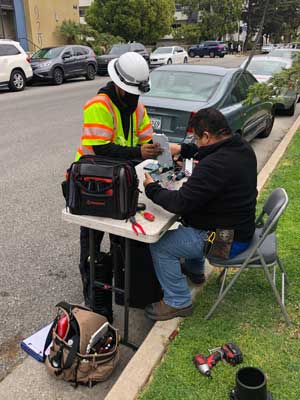
The FOA Fiber U “OJT-To-Cert”
program includes both fiber optics
and premises cabling (copper, fiber & wireless),
so it covers techs working in both outside plant and
premises jobs.
Like other FOA
programs, the OJT-To-Cert program is free. If you
and/or your company is interested in the FOA
OJT-To-Cert program,
contact FOA.
To explain how OJT
works and FOA's OJT-To-Cert program, FOA created a
short 10 minute YouTube video that explains what
OJT is, who uses it and how to use Fiber U to
organize and enhance OJT for new employees and
experienced workers too. Lecture 62: On
The Job Training For Fiber Optics Using Fiber
U
FOA
"Work-To-Cert" Program
Experience Plus
Online Study At Fiber U = FOA Certification
More techs have become comfortable with online
conferences, webinars and training. Many have
discovered that they can become FOA Certified using
their experience in fiber optics and study for the
FOA certification exams online at Fiber U. Thousands of
industry professionals have applied to the FOA
directly for certification without the need for
classroom training, based on their knowledge and
skills developed working the field. Since FOA
certifications are based on KSAs (knowledge, skills
and abilities), current techs already show the
skills and abilities required through their field
experience. FOA provides free online self-study courses at Fiber U for the knowledge
part to prepare you for FOA certification exams
which you can also take online.
If you are an experienced field tech interested in
certification, and FOA is the internationally
recognized certifying body for fiber optics, you can
find out more about the FOA "Work to Cert" program
here.
If you are already a CFOT, FOA also offers many
specialist certifications you can obtain based on
your experience as a field tech. See what's
available at Fiber
U.
FTTH Updates In The
FOA Guide And YouTube
FTTH
has always been the most popular application for
FOA's knowledge base. The subject is a major topic
in the FOA Guide and the Fiber U FTTH course has
been very popular. Many of our FOA approved schools
use the FOA curriculum and teach combination courses
for CFOT/CFOS/H for techs and CFOS/D (design) and
CFOS/H for designers.
As with all topics in the FOA knowledgebase, we try
to keep up to date, incorporating the latest
developments and trends to ensure our materials are
most useful to the industry.
Here's what we've created and updated recently:
FOA
Guide: Added a section on FTTH Network Design,
updated sections on Architecture and PONs (including
10G)
FOA's
YouTube Channel: Added 4 new FTTH videos on
Network Architecture, PONs, Network Design and
Installation/Test.
How Can These New Materials Benefit You?
- Update your
knowledge: Even if you already have your
CFOS/H or have completed the FTTx self-study
course on Fiber U, we recommend you go back to
the Fiber U course on FTTH Network Design and
take the architecture, PON and Design lesson
again.
- Getting Started
in FTTH: We recommend buying a copy
of FOA's
FTTH Handbook or going
straight to the Fiber U FTTx self-study
course which will get you started right
most quickly.
- Learning More
About Special Topics in FTTH: Read the
new/updated pages on the FOA Guide and watch
the new videos.
- Designing FTTH
Networks: If you are involved in the
design of FTTH networks but new to fiber
optics, start with the Fiber U Fiber Optic Network Design
course then take the Fiber U FTTx self-study
course.
- Teaching FTTH
Courses: If you are already an
FOA-approved school, download the new updated
curriculum. Not an FOA School? Contact FOA.
- Employee OJT
What's Next?
Our next project is to
use these new/updated training materials to help
train more techs.
- Training at FOA
approved schools: We will of course
work through the FOA network of approved
schools, many of which already teach FTTH
courses.
- OJT
(On the job training): We will also
be reaching out to network owners and managers
and their contractors who can use all these free
materials for OJT - on the job training - for
their workers.
Fiber U MiniCourses

Got An Hour Or Less?
Learn Something New About Fiber Optics.
FOA
has introduced a new type of Fiber U
course, the MiniCourse, a free online course you
could take in a short time, perhaps as you ate lunch
at your desk or took a coffee break. The
topics of these courses should explain what they are
about, and these are all very important topics to
fiber optic techs.
Fiber Optics In Communications
How Optical Fiber Works
Fiber Optic Network
Restoration
Fiber
Optic Connector Identification
Fiber U Color Codes
The Mysterious
dB of Fiber Optics
Fiber Optic Cable Bend Radius
Fiber Optic Link Loss And Power
Budgets
Fiber Optic Connector
Inspection And Cleaning
Fiber Optic Media Conversion
Fiber Optic Cable Midspan Access
Reading An OTDR Trace
The courses have two components, video lectures and
readings, that are complementary. As usual there is
a self-test to allow you to check your
comprehension. As with other Fiber U courses if you
desire, you can take a short test for a Fiber U
Certificate of Completion that costs
only $10.
All these free courses and many more
are available at Fiber U.
What Fiber Techs
Don't Know -
What We Learn From
FOA Certification Tests
As
FOA moves more testing over to our digital online
testing system at ClassMarker, we have access to
more data about our testing, including what
questions and topics on the tests are answered
incorrectly most often. Having this data gives us an
opportunity to evaluate the questions and how they
are stated, but more importantly it allow us to help
our instructors teach the subjects and us to change
our curriculum and online courses to emphasize these
particular topics. These are some of the topics that
we have noticed are answered incorrectly more often
in FOA and Fiber U tests.
Most of the questions missed are on testing.
1. OTDRs - particularly what information is in the
OTDR trace.
2. The difference between dB and dBm
3. Loss budgets - both the concepts and doing the
math
4. Insertion loss testing - single-ended or double
ended for testing patchcords or cable plants, how to
set 0dB references
5. Units of measure - fiber is measured in microns,
wavelengths in nanometers, etc.
At FOA, we're working to add Fiber
U MiniCourses on these topics and working with
our schools to emphasize these topics in their
classes.
If you are going to be taking a FOA certification
course or test in the near future, these topics
should be on your final exam study list.
What We Learn From Hands On Labs
We learn about students performance in hands-on labs
from the feedback of our instructors and our own
experiences too. One big problem is the use of hand
tools. Growing up today, you learn how to use
keyboards, mouses and touch screens, but decades
ago, you also learned how to use basic hand tools.
This is big enough of a problem that we're
considering adding some video lessons on basic hand
tools to prepare students for cable prep,
termination and splicing that require the use of
hand tools.
FOA Guide "Basics Of
Fiber Optics" Now Available Online in Portuguese
(6/2020)

FOA
has now translated the Basics of Fiber Optics
textbook in our Online Guide into Portuguese,
joining Spanish and French translations. For those
speaking Portuguese, we have the technical
information and for schools we also have curriculum
available.
Here is the FOA
Guide in Portuguese,
Spanish
and French
translations.
Time
To Learn - Online
Some
schools have been closed during the pandemic, so FOA
has been working with them to create new online
learning experiences that can in some cases lead to
certification online. FOA certifications are still
based on the KSAs - knowledge from the classroom,
skills from the labs and abilities judged by
instructors or proven by actual experience.
ZOOMing
Much of what we're doing benefits from the
capabilities of "Zoom." Others have created
videoconferencing apps, but none work so well,
especially with limited bandwidth. We've seen remote
labs that have an instructor showing students how to
use the tools they were sent then watching them
duplicate their actions. We have worked out methods
to use Zoom to proctor FOA's online certification
exams.
Blended
Learning
While most FOA schools have suspended in-person
training during this period, some are offering a
"blended learning" option. That means that
students sign up for a FOA certification course,
take the classroom sessions on Fiber U with the
assistance of a FOA certified instructor. Now
online instruction can include reviewing the
labs using the Fiber U Basic
Skills Labs, then when it's possible to attend
classes at the school, complete the hands-on
labs and take the FOA certification exam.
Offline Fiber U
FOA has also created offline Fiber U modules
to allow students with poor or limited
Internet access to use the Fiber U Basic Fiber
Optics and Premises Cabling programs without
Internet access. Contact FOA for information
on using this option.
Online Remote Labs
Alternatively, some schools are experimenting
with "remote labs," where the students get
sent tool kits and components and labs are
conducted by videoconferencing. Before the
labs, the students may watch demos by their
instructor on videoconferencing and/or review
the relevant "virtual hands-on" lessons in the
Fiber U Fiber Optics Basic Skills Labs
so they will already know the steps in the
exercises. And Fiber U has
the new Fiber U
DIY Basic Skills Lab lesson
with directions on how to
purchase inexpensive tools
online and use them to learn
basic fiber optic skills. Videoconferencing
allows the instructor to remotely monitor
their work and provide help as needed. Contact
the FOA for more information.
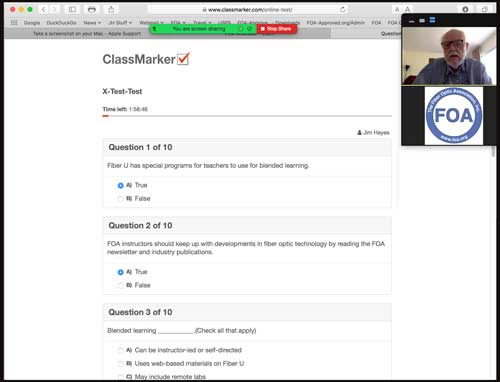
FOA Zoom Exam Proctoring
Online
Certification Testing
FOA has all its certification tests
available online, both for use by our
schools and by our direct "Work
to Cert" applicants. All FOA
certification tests require a proctor to
oversee the applicant taking the exam. In
this time of social distancing, getting a
proctor can be difficult, so FOA now has
procedures for online proctors
administering the exam. Contact
the FOA for more information.
OJT - On-The-Job-Training
Many novices get a job and learn on the job.
They usually have an experienced tech who helps
them gain the knowledge and learn the
skills they need to perform their job. Thinking
about this in relation to the FOA KSAs,
the knowledge, skills and abilities needed by a
fiber optic tech, the tech will learn
skills but not the basic knowledge that helps
them understand the processes involved. FOA can
offer help here with our FOA's
OJT-to-Cert Program,
using our Fiber
U online self-study programs. While the
tech learns on the job, they become a Fiber
U trainee, getting the knowledge they
need, while working under their "mentor" at
work. This is particularly good for
contracting companies who need techs but do
not have the usual training courses
available. Interested in OJT programs? Click
on the link below or contact FOA for
more information.
FOA's OJT-to-Cert
Program

FOA offers free online self-study programs at Fiber U.
Many users are preparing for FOA certification
programs - taking courses at our schools or using
the "Work-to-Cert" program. Some of our
schools are requiring Fiber U programs as
prerequisites for their classroom courses so they
can spend more time on hands-on activities.
FOA School Offers
Toolkit With Online Training
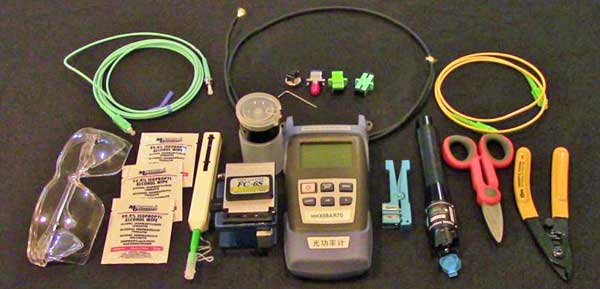
Slayton Solutions
(FOA Approved School #156) is offering a simple
fiber optic tool kit that includes a 29-piece set
of fiber optic tools and a power meter along with
training videos and online instruction for only
$499. 29 Piece Kit includes all tools and devices
a technician needs to install fiber optic
connectors and test optical power. Information on the kit is
available on YouTube. You can contact them for
more information at slaytonsolutions@sbcglobal.net
or https://www.fiberopticsinstitute.com
|
Publications /
Resources

|
More New FOA Video
Lectures On YouTube
Did you know YouTube
will close caption videos in many languages?
Here are directions.
FOA Lecture 68: Do It Yourself PON Demo (November 2021)
Build your own FTTH or OLAN PON demo with equipment purchased online.
FOA YouTube Video Describes
On-The-Job Training (OJT)
Lecture
62: On The Job Training For Fiber Optics Using
Fiber U
To
explain How OJT works and FOA's OJT-To-Cert program,
FOA created a short 10 minute YouTube video that
explains what OJT is, who uses it and how to use
Fiber U to organize and enhance OJT for new
employees and experienced workers too.
More New Videos
Including FTTH Series
As part of developing the new Fiber U MiniCourses,
we added several new YouTube videos:
Lecture 56 explains the issues of cable bend radius
limitations, typical cable specifications and how to
gage the proper radius or diameter when installing
or storing cable. Lecture 57 covers problems with
dirty connectors and how to inspect and clean them.
4
New Lectures on FTTH - #63-66
New Lecture on Fiber Optics at Electrical Utilities
- #67
FOA Lecture 51 Fiber
Optic Restoration Part 1 - Causes of
Damage To The Network
FOA Lecture 52 Fiber Optic
Restoration Part 2 - Planning For
Restoration
FOA Lecture 53 Fiber Optic
Restoration Part 3 - Troubleshooting
And Repair
FOA Lecture 54 Fiber Optic
Connector Identification - New and old
FOA Lecture 55 The
Mysterious dB of Fiber Optics. -
Understanding dB
FOA Lecture 56 Fiber Optic Cable -
Bend Radius -
Important for Installers to Understand
Like all our YouTube lectures, they are
all short and easy to understand.
Did
you know YouTube will close caption videos in many
languages?
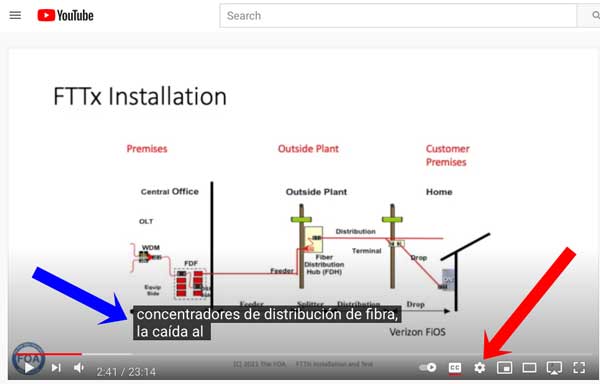
Sign in with Google to get translations for closed
captioning. Click on the settings icon (red arrow.)
Choose "Subtitles". English is the default
language. Click on the arrow after "English
(auto-generated) >". In the new window click on
"Auto-translate" and choose the language you
want.
FOA Loss Budget
Calculator On A Web Page 5/2020
FOA
has written many articles about loss budgets,
something everyone involved in fiber optics needs to
know and needs to know how to calculate. We recently
discovered how to get a spreadsheet ported to a Web
page, so we created this web page that calculates
loss budgets. We have an iOS loss budget app, but
with this web page, you can calculate loss budgets
from any device, smart phone, tablet, laptop, or
desktop computer that has web browsing capability.

Bookmark this page (especially on your
smartphone): FOA Loss Budget Calculator
Online
 We are continually updating the Online Reference
Guide to keep up with changes in the industry and
adding lots of new pages of technical information.
When you go to the FOA
Guide Table of Contents to see the latest
updates - look for
We are continually updating the Online Reference
Guide to keep up with changes in the industry and
adding lots of new pages of technical information.
When you go to the FOA
Guide Table of Contents to see the latest
updates - look for  . .
Recent updates:
FTTH
Updates: Added a section on FTTH Network Design,
updated Architecture and PONs (10G)
Color Codes For Fiber Optics
Fiber
Optic Projects - the FOA Guide to projects from
concept to operation
Coherent Communications Systems in
the FOA Guide.
Go
to The FOA Online Fiber Optic
Reference Guide.
FOA Reference Books
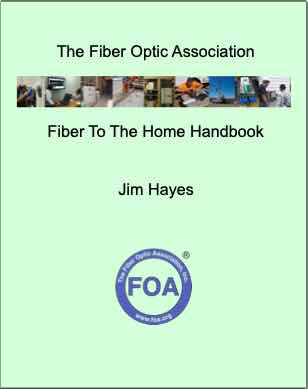
NEW:
FOA's FTTH Handbook: We've
gathered all our information on FTTH from the FOA
Guide and past issues of the FOA Newsletter and
edited it into a 112 page "FTTH Handbook." We even
added a section on planning and managing FTTH
Projects.
The Fiber Optic Association
Fiber To The Home Handbook is
available from Amazon in print and Kindle
editions.
 
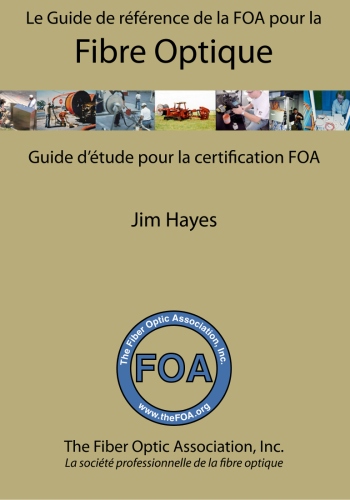      
Fiber Optics (4 languages), Premises Cabling, OSP
fiber and construction, Network Design, Testing and
FTTH
The FOA has it's own
reference books for everyone working in fiber
optics - contractors, installers and end users as
well as for use as textbooks in classes at
educational institutions. They are available as
printed books or Kindle at much lower prices than
most textbooks since we self-publish and sell
online, cutting out the middlemen. Click on the
book images for more information. The Reference
Guide To Fiber Optics is also available in Spanish
and French (print and online) and Portuguese
(online only.)
Click on any book for more information
about it.
FOA
has reprinted

"Lennie Lightwave's Guide"
on its 25th anniversary in a special print
edition.
Lennie
and Uncle Ted's
Guides are online or as free iBooks on iTunes.


Click on any of
the books to learn more.
- Fiber
Optic Safety Poster to download and
print
Resources For
Teachers In K-12 And Technical Schools
Teachers in all grades can introduce their
students to fiber optic technology with some
simple demonstrations. FOA has created a page for
STEM or STEAM (science, technology, engineering, arts
and math) teachers with materials appropriate to
their classes. Fiber Optic Resources For
Teachers.
|
Safety
|
On Safety
FOA
considers safety an integral part of all our
programs, curriculum materials and technical
materials. We start all our textbooks and their
online versions with a section on safety in the
first chapter, like this: Before
we get started - Safety First!
There are pages on the FOA Guide on Safety
procedures Including Eye Safety and. Digging
Safely
And a YouTube lecture: FOA Lecture 2: Safety When Working
With Fiber Optics
In our OSP Construction Section, these pages cover
many safety issues including those related to the
construction of the cable plant: Project Preparation And Guidelines,
Underground Cable Construction,
Underground Cable Installation
and Aerial Cable Installation.
There is even a safety poster for the fiber
activities: PDF Safety Rules For Fiber Optics
The FOA is concerned about safety!
There is a toll-free
"call before you dig" number in the USA: Dial 811
See www.call811.com
for more information
The Common Ground
Alliance has an excellent "Best Practices Guide"
online
- The US Department
of Transportation has a website called "National
Pipeline Mapping System" that allows one
to search for buried pipelines.
Why We Warn You To
Be Careful About Fiber Shards

Photo courtesy Brian Brandstetter,
Mississauga Training Consultantcy
Safety Leader
Magazine
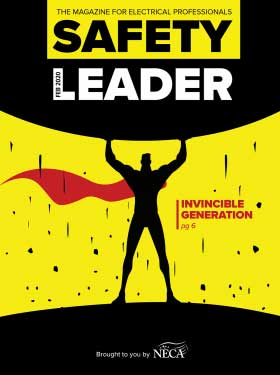
Safety Leader, a new quarterly magazine, informs and
educates electrical contractors on safety from
various angles—electrical, workplace, PPE,
regulations, leadership, line work, NFPA 70E, and
more. Safety Leader is bundled with ELECTRICAL
CONTRACTOR in February, May, August and November. To
receive Safety Leader subscribe to ELECTRICAL CONTRACTOR
magazine here or subscribe to the ELECTRICAL
CONTRACTOR newsletter here.
2022 Conference On
Damage Prevention In Phoenix

Global Excavation Safety Conference
Phoenix AZ
March 1-3, 2022
GlobalExcavationSafetyConference.com:

The magazine, dp-Pro, sponsor of the conference,
has also published it's latest issue with an
article by FOA on "New Construction Techniques
in Fiber Optics" and a overview of the FOA. You can read the magazine here.
When You Bury Marker
Tape, Bury One That Will Work (July 2021)
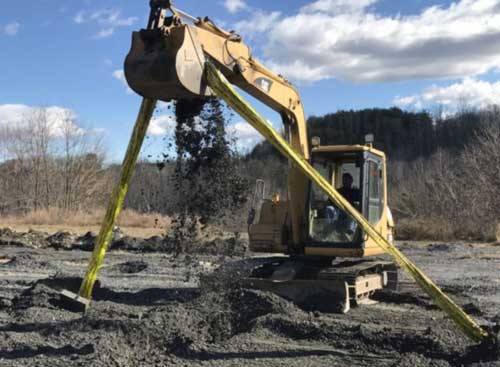
Signaltape® provides a visual
warning by ensuring tape is brought to the surface,
alerting the operator to the presence of a buried
utility. It includes a 3,000-lb. tensile strength
aramid fiber membrane, which ensures the tape is
pulled to the surface to alert the excavation crew.
Signaltape
comes in two sizes: 12″ x 1000′ or 6″ x
1000′.
Best Practices Guide
For Underground Construction
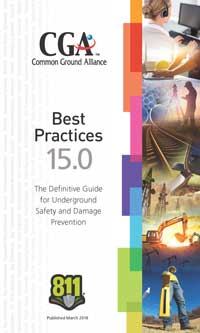
We
assume you are familiar with the "One Call"
and "Call Before You Dig" (811) program, but
are you also familiar "Click Before You Dig.com"
and with the people behind it - the Common Ground
Alliance and their Best Practices website?
Officially formed in
2000, the CGA represents a continuation of the
damage prevention efforts embodied by the Common Ground
Study. Sponsored by the U.S.
Department of Transportation and completed in
1999, this Study represents the collaborative work
of 160 industry professionals who identified best
practices relating to damage prevention. Any best practice or
program endorsed by the CGA comes with consensus
support from experts representing the following
stakeholder groups: Excavators, Locators, Road
Builders, Electric, Telecommunications, Oil, Gas
Distribution, Gas Transmission, Railroad, One
Call, Public Works, Equipment Manufacturing,
State Regulators, Insurance, Emergency Services
and Engineering/Design.
Read the CGA Best Practices Guide
here.
Here are all the CGA resources for
damage prevention.
The
US Department of Transportation has a website
called "National
Pipeline Mapping System" that allows one to
search for buried pipelines.
|
FOA/About
About The FOA
- Contact
Us: http://www.foa.org
or email <info@foa.org>

FOA has a company page
and four LinkedIn Groups
FOA
- official company page on LinkedIn
FOA
- covers FOA, technology and jobs in the fiber optic
marketplace
FOA
Fiber Optic Training - open to all, covers
fiber optic technology and training topics
Grupo de La Asociación de
Fibra Óptica FOA (Español)
|
What is The FOA?
The FOA is a, international non-profit
educational association chartered to promote
professionalism in fiber optics through education,
certification and standards.
Founded in 1995 by a dozen prominent fiber optics
trainers and leaders from education, industry and government as a professional society for fiber
optics and a source of independent certification,
the FOA has grown to now being involved in numerous
activities to educate the world about fiber optics
and certify the workers who design, build and
operate the world's fiber optic networks.
Read More
FOA was 25 years old
July 2020 - Read about FOA's history
Learn
More About FOA's History.
Contact
Us
The Fiber Optic Association Inc.
http://www.foa.org or email
<info@foa.org>
The
FOA Home Page

Want to know more about fiber optics? Study
for FOA certifications? Free
Self-Study Programs are on "Fiber U®."
Looking for specific information? Here's the largest
technical reference on the web: The
FOA Online Fiber Optic Reference Guide.

Free online self-study programs
on many fiber optics and cabling topics are
available at Fiber U,
FOA's online web-based training website.
|
-
Contact Us
The Fiber Optic Association Inc.
http://www.foa.org or
email <info@foa.org>
- Phone:
1-760-451-3655
The FOA Home Page
Fiber Optic Timeline
(C)1999-2022, The Fiber Optic Association, Inc.
|
FOA Logo
Merchandise
New FOA Swag! Shirts,
Caps, Stickers, Cups, etc.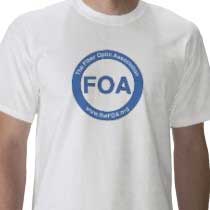
The
FOA has created a store on Zazzle.com offering lots
of new logo merchandise. It has lots of versions of
shirts and other merchandise with "FOA," "Fiber U,"
"Lennie Lightwave" designs and more so you should
find something just for you! See FOA on Zazzle.
-

Your
Name, CFOT® - It pays to advertise!
The FOA encourages
CFOTs to use the logo on their business cards,
letterhead, truck or van, etc. and provides logo
files for that purpose. But we are also asked
about how to use the CFOT or CFOS certifications.
Easy, you can refer to yourself as "Your Name,
CFOT" or "Your Name, CFOS/T" for example.
Feel free to use the
logo and designations to promote your achievements
and professionalism!
Contact
FOA at info@thefoa.org to get logos in file format
for your use.
Privacy Policy (for
the EU GDPR): The FOA does not
use cookies or any other web tricks to gather
information on visitors to our website, nor do
we allow commercial advertising. Our website
hosts may gather traffic statistics for the
visitors to our website and our online testing
service, ClassMarker, maintains statistics of
test results. We do not release or misuse any
information on any of our members except we will
confirm FOA certifications and Fiber U
certificates of completion when requested by
appropriate persons such as employers or
personnel services.
Read
the complete FOA Privacy Policy here.
|




























 Connecting a customer.
Connecting a customer.







































 .
.








